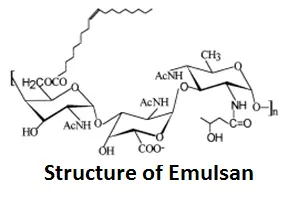Inspired by Nature
On the heels of the environmental disaster at the Deepwater Horizon Oil Well in the Gulf of Mexico, it was concluded that the vast amount of oil released into the ocean was no longer detectable. There were numerous postulated explanations, but a study reported that the oil-eating bacteria, Oceanospirllales, was the leading reason for the disappearance of the large oil plumes. Reports on the oil-eating bacteria, A.calcoaceticus, known as RAG-1, reports that the emulsifier is a simple polysaccharide material, similar in structure to starch. A polysaccharide, named Emulsan, secreted by the RAG-1 bacteria, has been extensively studied and has been shown to be a good emulsifier for oil in water mixtures. The structure of Emulsan was identified as a copolymer two simple sugar-like molecules, N-acetyl galactosamine and N-acetyl glucosamine. Therefore we hypothesize that modified polysaccharides can potentially be a good starting material for synthesizing bio-based surfactants.

- Gulf Slick a Free Lunch for Bacteria, Science, 1990, 249, 120
- Rosenberg, Appl. Env. Microbiol., 1983, 46, 573-579
- D.L Kaplan, Biomacromolecules, 2008, 9, 1988–1996
